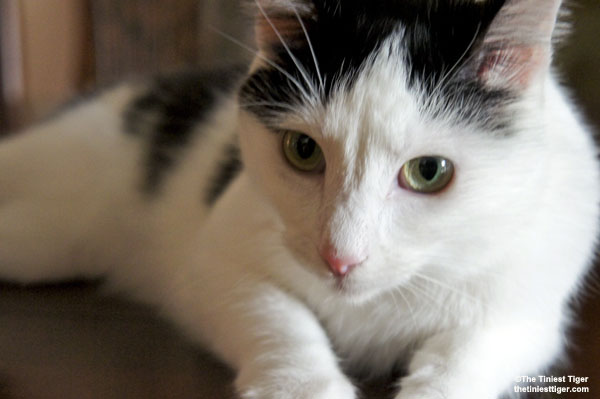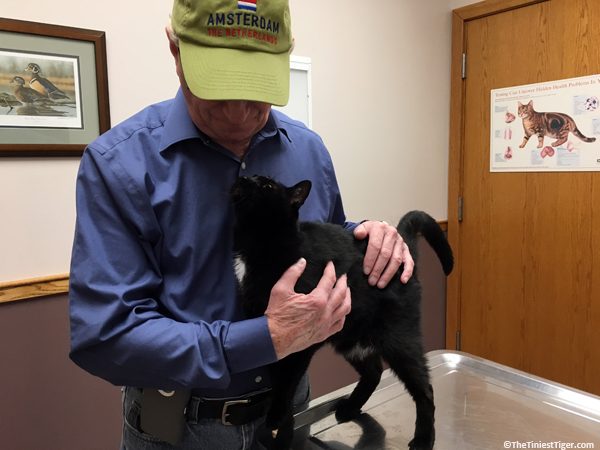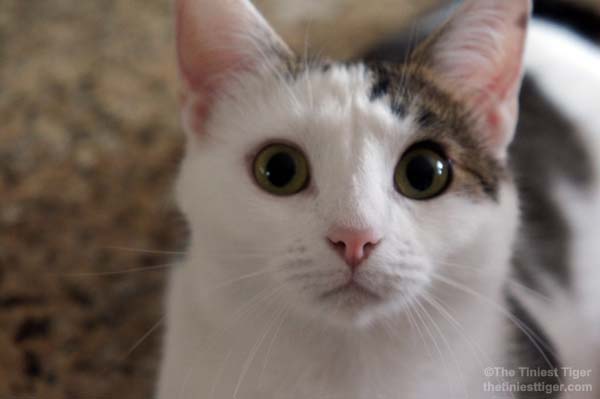
Why Do Cats Purr?
We associate our cat’s purr as a sign of a happy, contented cat and the low rumble helps us to relax, feel happy, and content too. One of the things we cat parents cherish is when our cats join us either on our laps or beside us and begin to purr. But, why do cats purr?
This calming effect from the power of the purr caught the attention of Dr. Adnan Qureshi, a professor of neurosurgery and neurology at the University of Minnesota. Dr. Qureshi’s study extracted data from 4500 Americans aged 30 to 75 over a ten year study and found that felines may have special health sustaining qualities. In fact, the results showed that people living with a cat are 40% less likely to die from heart attacks than those who do not live with a cat.
The most logical reason was thought to be that cats relieve stress and anxiety thus reducing the risk of heart disease. But, according to the same study, dog owners did not benefit from the protection from heart disease even though dog owners get exercise from walking their dogs and are also comforted by the company of their dogs. The one thing that cats do that no dog will ever do is purr.
The Healing Power of the Purr
Scientists still speculate exactly why cats purr. Some theorize because our cats purr at the exact same 25 Hz frequency that is used to help human wounds and bones mend quicker, that the little motor in our cat might be therapeutic.
Purring is not only healing and comforting to us, but is thought to provide comfort to the cats themselves. Cats also purr when they are frightened or threatened, when they are sick and even when they are close to death. The purr has been compared to humans smiling. Sometimes we smile when we are nervous as well as when we are happy.

Purring Provides Comfort to cats themselves
Some cats purr while undergoing their physical examination at the veterinary office. This type of purring is thought to be the cats attempting to calm themselves down while in a stressful situation. The sound of purring is distracting to the doctor trying to listen for clinical abnormalities such as heart murmurs and cardiac gallop sounds. Purring may hinder the measurement of heart rate and prevent an effective assessment of the respiratory system. Mercy has a heart murmur that is difficult to hear over his purr. Our Annie purrs loudly at the vet’s office too while Eddie is quiet as can be.
The purring cat is so problematic that a pilot study was undertaken by the Department of Clinical Veterinary Medicine at the University of Cambridge to investigate any tactics believed to be effective in interrupting or stopping a cat from purring during a physical examination. Tactics being investigated to stop purring are gently blowing at the ears of the cat, running water from a faucet, touching the bridge of the cat’s nose with a finger using slight pressure, among others.
How Do Cats Make that sound?
The cat purr is a rhythmic, repetitive neural oscillator sending messages from the brain to the laryngeal muscles causing them to twitch at the rate of 25 to 150 vibrations per second. This sudden separation of the vocal cords takes place during both inhalation and exhalation. This feline vibrato is typically so low-pitched that we seem to feel the purr perhaps even more than we hear it.
Some Big Cats Purr Too
Purring isn’t limited to our little house cats in the feline family. Cheetahs, puma and bobcats can purr, but the big cats belonging to the genus Panthera; tigers, lions, jaguars and leopards roar but are not able to purr. The chuffing sound you hear from the big cats is produced on exhalation alone. Only the smaller cats are able to purr as effortlessly as breathing in and out.
The big cats are thought to have evolved to roar as a way of protecting their vast territory while on the prowl for prey. The smaller cats rely more heavily on scent marking to stake their claim on their territory rather than needing a loud far-reaching form of communication.
Our house cats’ signals of communication with us are thought to originate from the time they were kittens dependent on their mother. Along with kneading, or making biscuits as some describe the action when our cats use their paws to massage us, purring is one of these signals first observed in kittens while nursing. And our cats also purr at feeding time when they are actively seeking food from us.

Solicitation Cry with embedded Purr
House cats use many different tactics and signals to communicate with us. You might be familiar with your cat’s behavior if breakfast is not served on their schedule. Our Annie attempts to wake us by knocking items off the nightstand or leaping onto the bed and head bunting us while purring loudly. If these efforts fail, Eddie is quite skilled at using the solicitation purr also known as the manipulative meow.
A recent study exposed one of the house cats best kept secrets, that cats are able to control us by making a subtle change in their purr that exploits our sensory biases. Cats are able to embed a high frequency vocal component within their low frequency purr that triggers a sense of urgency in us.
Cats dramatically emphasize this solicitation cry, embedded within the naturally low-pitched purr when they want food. The cat has figured out that this cry taps into an inherent mammalian sensitivity making the sound difficult to ignore.
The Purr Is a Subtle and clever manipulation tool
The study carried out by the Centre for Mammal Vocal Communication Research in the Psychology Department at the University of Sussex in the United Kingdom showed that the domestic feline’s manipulated purr-cry occurs at the same frequencies, (300-600Hz) as a human infant’s cry. The cat does not go so far as to mimic the urgency of the cries of a distressed human infant but has adapted to vocalize so that we, their parents, most likely will not just roll over and go back to sleep.
Our cats have figured out how to bridge the inter-specific communication gap between feline and human by taking advantage of our basic nurturing instincts enhancing the level of cooperation and care they receive from us. Purring could be considered a subtle and clever manipulation by our cats to get what they want from us.
Overall it is a good deal for us. We get the health benefits of the powerful purr along with love and companionship from our feline family members.